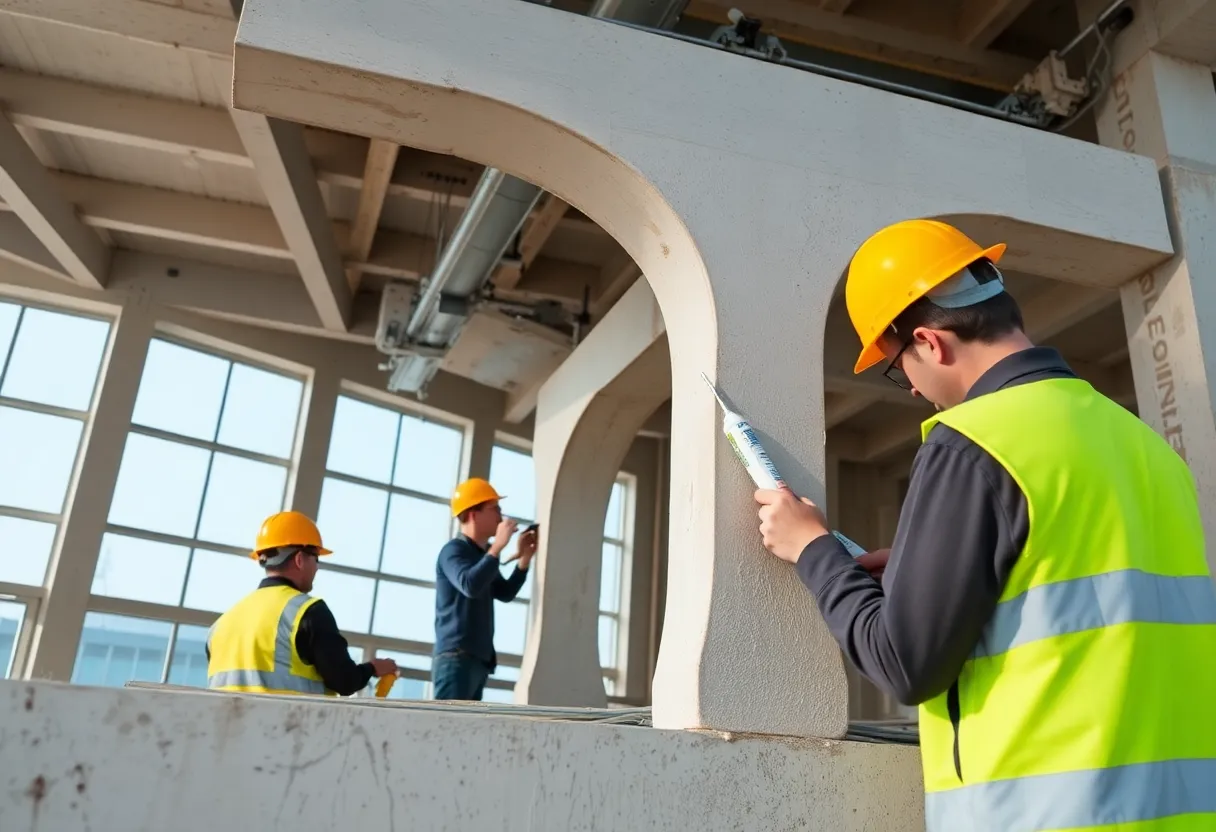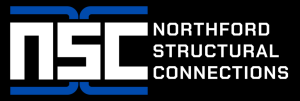

Workers applying sealants to prevent joint leaks in precast double-tee structures.
Article Sponsored by:
Northford Structural Connections (NSC) specializes in innovative engineering solutions for enhancing the safety and durability of precast concrete structures. Their patented products, including the Double-Tee Flexible Connection (DTFC) and Double-Tee Connection Pro (DTC Pro), address critical challenges like fatigue, corrosion, and seismic resilience. With a focus on quality and longevity, NSC provides advanced connection systems trusted by industry professionals for both retrofitting and new construction projects.
Double-tee structures are widely utilized in both commercial and industrial construction due to their inherent strength and efficiency. However, one significant challenge these structures face is the issue of joint leaks. Such leaks can lead to severe problems, including structural integrity issues, water damage, and increased maintenance costs. Understanding how to effectively prevent joint leaks in double-tee structures is essential for structural engineers and builders.
Double-tee elements are precast concrete pieces characterized by a T-shaped cross-section. They are primarily used in flooring and roofing systems for their robustness and span capabilities. The inherent design allows for quick installation, reduced material usage, and lower overall construction costs.
Double-tee structures are predominantly applied in:
Joint leaks in double-tee structures often originate from several factors. Understanding these causes can lead to more effective prevention strategies.
Inadequate design can lead to misalignment in joints. Insufficient slope for drainage can also trap water, leading to leaks.
Using low-quality sealants or inappropriate materials that degrade over time can exacerbate joint leaks. The materials used must be compatible with the precast concrete.
Improper installation can compromise the integrity of the joints. This includes inadequate curing time for sealants, incorrect alignment of double tees, and lack of attention to detail during the installation process.
External factors such as temperature variations, freeze-thaw cycles, and moisture can affect the performance of joints. These elements can exacerbate existing vulnerabilities, leading to leaks.
There are several proactive strategies that can be employed to prevent joint leaks in double-tee structures effectively.
Implementing rigorous design standards is crucial. Structural engineers should:
Choosing high-quality materials for joints and sealants is essential. Consider the following:
Proper training and adherence to best installation practices can mitigate the risks of joint leaks significantly. Important recommendations include:
Establishing a routine maintenance plan can help identify and address vulnerabilities before they result in significant leaks.
In addition to the above measures, leveraging advanced structural solutions can enhance the longevity of double-tee systems and minimize joint leaks.
Utilizing integrated joint sealing systems specifically designed for double-tee structures can provide improved protection against leaks. These systems consider the structural dynamics and environmental influences, ensuring that joints remain watertight.
Incorporating modern technologies such as moisture sensors can facilitate real-time monitoring of joints. These sensors can detect early signs of leaks, allowing for immediate intervention.
If leaks have already become a problem, structural rehabilitation techniques can be employed. Methods such as pressure grouting, applying water-resistant membranes, or reinforcing joints using injected materials can effectively address existing joint leaks.
Preventing joint leaks in double-tee structures is critical for maintaining structural integrity and reducing long-term costs. By understanding the common causes and implementing thorough design, material, installation, and maintenance practices, builders and engineers can significantly reduce the risk of leaks. The incorporation of advanced structural solutions further adds to the efficacy of preventive measures, ensuring that double-tee structures remain robust and reliable.
Ultimately, vigilance in the planning and monitoring stages is essential. By prioritizing these practices, the construction industry can uphold the performance and durability of double-tee systems, safeguarding investments for the future.

Concrete Strength • Metal Resilience • Connecting Futures
Phone: (203) 777-0751
Email: admin@nscclips.com
News Summary A new subscription service is transforming how legal professionals access industry insights, offering…
News Summary Mark Roman has been re-elected as a Top 100 Trial Lawyer in Florida…
News Summary Shreveport launches 'Understand the Law,' a segment aimed at educating viewers about personal…
News Summary The Metropolitan School District of Martinsville is facing a Tort Claim Notice filed…
News Summary The legal community mourns the sudden loss of Jessica Aber, a distinguished lawyer…
News Summary Jessica Aber, a distinguished U.S. Attorney for the Eastern District of Virginia, has…